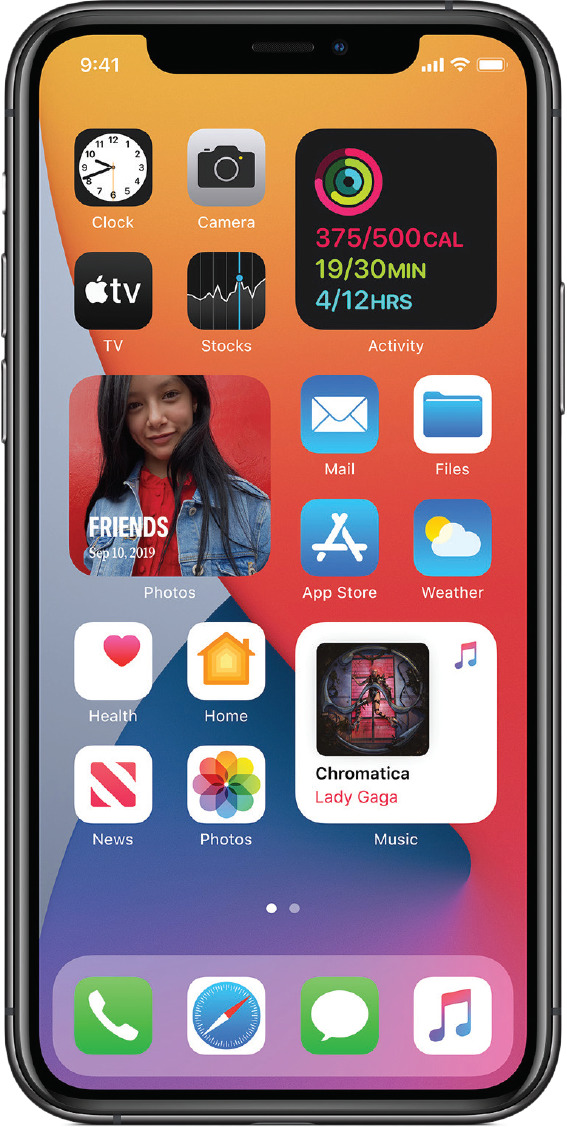AFTER YEARS OF LITTLE CHANGE in the basic organization of the iPhone home screen, Apple has dramatically retooled its smartphones’ user interface with its latest operating system software, iOS 14. Accessible in beta form—and slated to be widely available this fall—iOS 14 gives iPhone users far greater flexibility in customizing their home screen and replicates some popular features from Google's Android platform, including picture‐in‐picture (PiP) video capability.
With the new iOS, Apple redesigned its widgets to be more data‐rich and deliver real‐time information such as weather, news, and stock prices, which previously resided on the “Today” view. Moreover, widgets can be placed on any home screen page and resized as well as organized into Apple's signature “Smart Stacks” feature, which allows the phone to decide what app to show based on time, location, and activity.
Apple also overhauled how apps are organized with its new App Library, which presents all of the user's apps in a single view, automatically bundles them into category‐based folders, and highlights apps that might be helpful at the moment. A new form of apps called “App Clips” lets users quickly download a light chunk of software to perform a certain action, such as redeeming a coupon code for a retail transaction, without triggering the time‐ and data‐consuming download of a full‐featured app.

A Home Screen Makeover
With iOS 14, Apple introduces its biggest update ever to the iPhone's home screen.
Image: Courtesy of Apple
Furthermore, to avoid disrupting users, neither incoming voice calls nor the Siri digital assistant will take over the entire screen when in use. The former will instead be represented by a small banner at the top of the screen and the latter depicted in a small animation at the bottom.
Of particular interest to the display community is iOS 14's PiP feature, which lets a user watch a video in a small window while keeping the rest of the screen available for other functionalities such as responding to messages. This replicates the PiP video capability already offered on iPads and Macbooks and brings the iPhone to feature parity with Android phones that have had PiP for several years. Apple's version does offer some improvements, including the ability to move the thumbnail video window around on the screen, resize it by pinching it, or do away with it altogether by swiping it to the side while still continuing to listen to audio.
PiP should become an increasingly important feature as the amount of video that people consume on their phones, compared to the amount they watch on TV, continues to grow. That's particularly true among younger consumers, says Robert Cavin, a digital media industry analyst for Frost & Sullivan. He cites an eMarketer study that found that in 2019 US consumers spent more time each day on their mobile devices than they did watching television—3:43 averaged on the mobile device, excluding voice time but counting all other activity, compared to 3:35 spent watching TV. Cavin says PiP is even more crucial in rapidly growing video streaming markets such as India, where the smartphone is the primary screen for many consumers who enjoy over‐the‐top (OTT) content via cheap data plans. “Anything you can do to keep the video playing is way more beneficial when that's your primary screen,” he says. —Glen Dickson
–ROBERT CAVIN, FROST & SULLIVAN
From:SID-Wiley Online Library


 中文
中文 日本語
日本語 한글
한글 English
English Return
Return